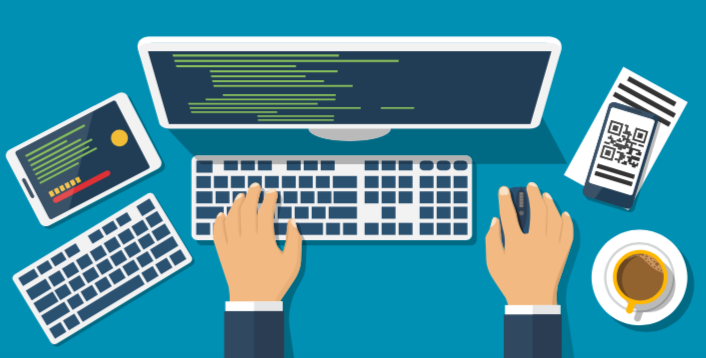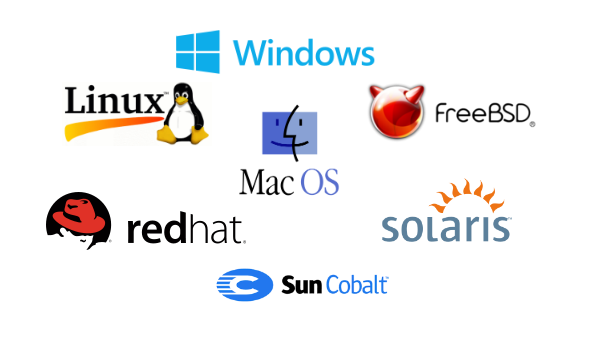An operating system (OS) is a system software that manages all other application programs in a computer. It acts as an interface between the computer hardware and the user by providing common services for computer programs. It makes the computer functional and is responsible for running all the other software’s.
In simpler terms, an OS is the first software that the memory loads when we start the computer. This is known as booting. Once the memory loads all the operating program instructions, executing applications like spreadsheets, word, paint and other programs becomes easy.
When it comes to operating system, there are a lot of questions that come to one’s mind. Why do we need an OS in the first place? What are it’s types and functions? And, how exactly is a Desktop OS different from a mobile OS?
Need of an Operating System
In the earlier days, users designed applications according to the internal structure of the hardware. This process was quite complex and tedious and only experts could use computers. Operating System enabled the users to design the application without concerning the details of the computer’s internal structure. In general, it makes the boundary between hardware and software transparent to the user.
Operating System acts as a resource manager.
Types of Operating Systems
■ Single User Operating System: It is a type of OS which allows only one user at a time. The most popular single user OS are MS DOS(Microsoft Disk Operating System) and Windows 95.
■ Multitasking or Time-sharing Operating System: It is a type of OS which allows multiple software processes to run at the same time. Unix, Windows 2000, Windows Vista, Windows XP, Windows NT, are all examples of multitasking OS.
■ Multi-user Operating System: It allows for multiple users to use the same computer at the same time. For example, Linux, Windows 2000, Windows Vista, Windows XP, Windows NT, support multiuser performance.
■ Multiprocessing Operating System: It is an OS capable of supporting and utilizing more than one computer processor. For instance, Linux, Unix, Windows 2000, Windows Vista, Windows XP, etc. all perform multiprocessing activities.
■ Multithreading Operating System: It allows different parts of a software program to run at the same time. For example, Linux, Unix, Windows 2000, etc.
■ Distributed Operating System: Distributed means that the system stores and processes data on multiple locations. Thus, in a Distributed OS, users can the access remote resources in the same way as the local ones. These remote resources can be hardware as well as the software. This helps in resource sharing, computation speedup, reliability as well as better communication.
■ Real Time Operating System: In this OS, response time is already fixed. This means that the time to display the results after processing has been fixed by the processor or CPU. Therefore, the places which require higher and timely response use these systems.
Reservation systems and manufacturing industries use this type of operating system.
Commonly used operating systems
■ Microsoft Windows Desktop OS: Windows is the most used OS on Desktops and Laptops, with ~76.56% market share.
In 1985, Microsoft released the first version of Windows. This was simply a GUI offered as an extension of Microsoft’s existing disk operating system, also known as MS-DOS.
■ Linux: It is an open source software, which means anyone can download it from the internet. Also, anyone can make further changes to it and use it for free.
■ Mac OS: In 2001, Apple Inc. released the macOS operating system. It is the second most widely used desktop OS, after Microsoft Windows, with a ~17.1% market share.
■ Chrome OS: Chrome OS is a Gentoo Linux–based operating system designed by Google. It is derived from the free software Chromium OS. It thus uses the Google Chrome web browser as its principal user interface. In June 2011, Google released Chrome OS and it currently has a market share of ~1.72% .
■ Google Android: Google Android OS is Google’s Linux-based open source operating system for mobile devices, released in September 2008. At present, the world’s most widely used smartphone platform is Android with ~72.48% market share.
■ IOS: In June 2007, Apple Inc. also developed the iOS mobile operating System. The company uses it exclusively for its hardware. Hence, it is the operating system that powers many of the company’s mobile devices.
Difference between Desktop and Mobile operating systems
Smartphones and computers can share the same OS. But, they differ only due to the different requirements and constraints on the platform.
Firstly, different processors use different instruction sets. OSs designed for a particular family of processor use instructions that only that particular processor supports and others might not.
For example, typical smartphones have ARM processors. These are mobile processors and can only run the software developed for them. They cannot run desktop x86 and x64 OS software.
However, some devices do have Intel Atom processors (which can potentially run desktop OSes).
Secondly, mobile operating systems have very different requirements than computer’s. For example, the android OS has support for touchscreen because there’s no keyboard interface.
Further, there are different physical requirements for thermal as well as power management for a mobile and a desktop. For instance, the screen and CPU shut down when you lock the phone leading to less power consumption.
Lastly, the services needed by a smartphone are different than what other computers use. So, the OS used won’t be exactly the same. For example, services like GPRS, EDGE, 3G etc. , present in smart phones, require different OS than the desktop OS.
Moreover, a Computer OS doesn’t require any of that, much like NASA’s OS doesn’t require a Mp3 player.









Quality posts is the important to invite the viewers to go to see the web page, that’s what this web page is providing.